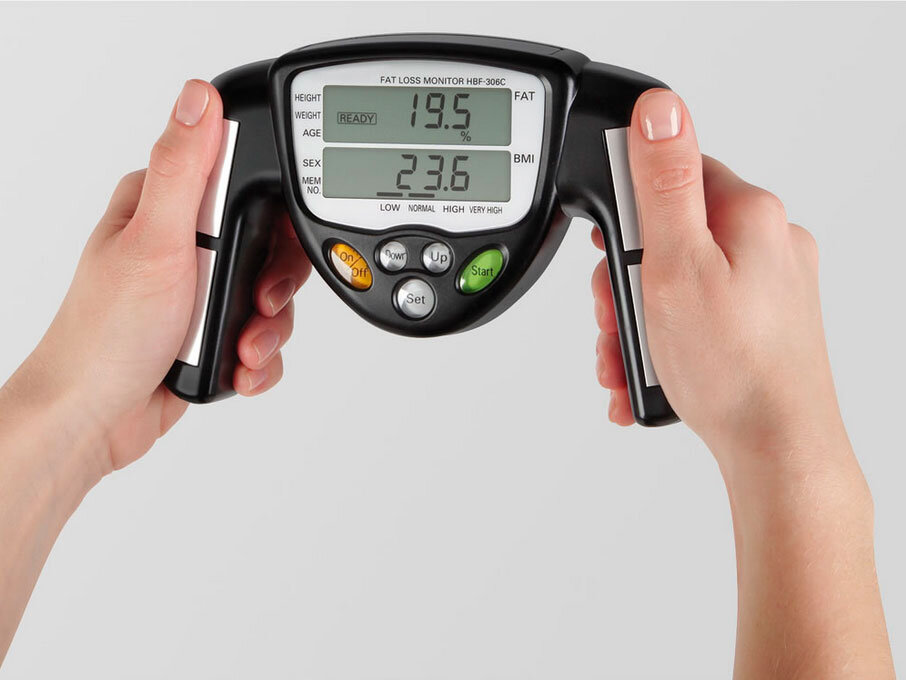Body Fatness Tests
Testing your body fat.
This article is for the everyday person, interested in how to test body fat, or what some people may call your “body fatness”. There are many forms of body fat tests, with a number of them being very costly and requiring equipment operated by a professional. This article will not cover the highly specialized body fat testing equipment, but rather spotlight the types of fatness tests that can be done by individuals in their home or at the gym. The high-dollar specialized equipment is not always the most accurate body fat test.
Types of body fat tests.
Body Mass Index or BMI.
You may have heard of the Body Mass Index, which is what your doctor or insurance company may use to determine your fatness. This takes into account how much you weigh in relation to your height. If you are of average stature, this could be a decent tool to monitor your progress. The problem with the Body Mass Index is that it does not take into account how much muscle you have. If you have a considerable amount of muscle tone, this test could say you are fat. Individuals who participate in strength training can often test significantly overweight or even obese. This is because the scale only tells you your weight, and not what you are made of, so if you weigh more because of the muscle tone that you carry, this test will say you are fat. Because the medical community and insurance companies need a fatness test for the masses, and not special populations, the Body Mass Index is often used.
Bioelectrical Impedance
For its ease of use, bioelectrical impedance has become a popular method of testing body fat. It is common to see a hand-held version of this device, and also something that looks like a bathroom scale. Much of the popularity of this form of body fat testing comes from the fact that the average person can do it in the comfort of their home, without needing professional help.
This device uses an electrical current through the body to determine your fatness. You do not feel the electrical current at all. The problem with this form of body fat testing is water. Most of your body is made up of water, and it is also something that can vary a great deal. Medications, alcohol, coffee, tea, soda pop, medications, and menstruation are only a few things that can affect the amount of water in your body, and thus totally mess up the results of this body fat test.
To ensure the accuracy of the form of body fat testing, it is recommended that you test yourself first thing in the morning, after you have gone to the bathroom. This is probably the time of day that you are closest to the same equilibrium from day to day.
Bioelectrical impedance can be used for general tracking of your fatness, but not for a “true blue” accurate number, meaning that there is a margin of error that can be considerable if your water is fluctuating. It also has been shown to be inaccurate with people that have a muscular build.
Skinfold Calipers.
This form of body fatness testing is often called the “body fat pinch test”. And for good reason because different parts of your body are pinched while measuring the thickness of your skin and underlying body fat. This does require a knowledgeable person to administer this body fatness test, as one of the biggest margins of error comes from an inexperienced tester.
This test is slightly more invasive than a body mass index or a bioelectrical impedance test, in the sense that the tester may pinch anywhere from 2-10 different places on your body. While these are nowhere near your private parts, some people are not comfortable with someone pinching the fat around their midsection or other places on the body where you may store fat the most.
When performed by an experienced professional, the test results of a skinfold body fat test can be fairly accurate. There is always a margin of error, but overall the test has consistency. If being tested by someone without experience, the margin of error rises.
Another thing to consider with this form of testing is the mathematical equations used to determine your body’s fatness. After measuring all the “pinches”, these numbers are all put into an equation to give you a final answer. There are equations for many different populations of people. For instance, there are equations for lean male black athletes and different equations for the average middle-aged woman. If you are only tracking progress and do not need your exact body fat percentage, you can simply use the same equation for all your testing and this will do a great job monitoring progress.
Circumference measurements.
Circumference measurements do not measure body fatness at all. But many people like to see how many “inches they have lost”, and thus keep records. To take the most accurate measurement, the tester should measure from the exact same spot in order to repeat the test accurately in the future. For instance, if you are measuring the arm, the measurement needs to be taken the same distance from the elbow each time.
Because of the highly variable contours between individuals, if you do not measure from the exact same spot each time, you will have grossly inaccurate results. This is especially true around the hips and waist, where measuring an inch higher or lower than before can give totally different numbers. Circumference measurements is one of the more inaccurate ways to track body changes. Going by how your clothes fit is better but this does not give you a number of inches lost that many are desiring.
Body fat testing results.
Once you have determined your body fat percentage, what do you do with that information?
Obviously, this number can help determine your state of health. A high body fat percentage is linked to a number of life-threatening medical conditions. It also is linked to exacerbating other conditions that can ultimately lead to death. Covid-19 is a perfect example, but there are countless others.
Your body fat percentage also tells you how much of your body is made up of lean muscle mass. Lean muscle mass is everything in your body that is not fat. So your lean muscle mass includes muscle, hair, internal organs, bones, fingernails, etc. It also includes water, and as we have mentioned before, water can fluctuate with people a great deal.
If you are adding strength training to your lifestyle, it is cool to see your lean muscle mass (muscle tone) increase, as your body fat decreases. A body fatness test will tell you what changes your body is going through, even if it is not the most accurate body fat test. It will give you a baseline and show the direction you are heading. It is common for people to lose very little weight, or even gain weight with strength training, while at the same time losing inches from the reduction in body fatness.
Body fatness tests provide great information for the person that wants to have it. It should never be done for someone who is reluctant or self-conscious about their weight. For this person, it can be very intimidating or even humiliating. This can lead to unhealthy eating habits and also a negative body image, which is the breeding ground for an eating disorder.





